
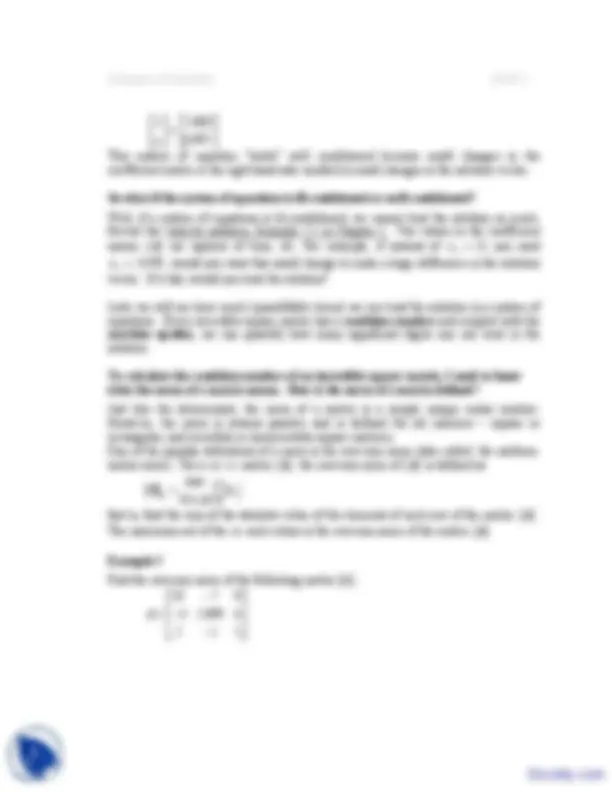
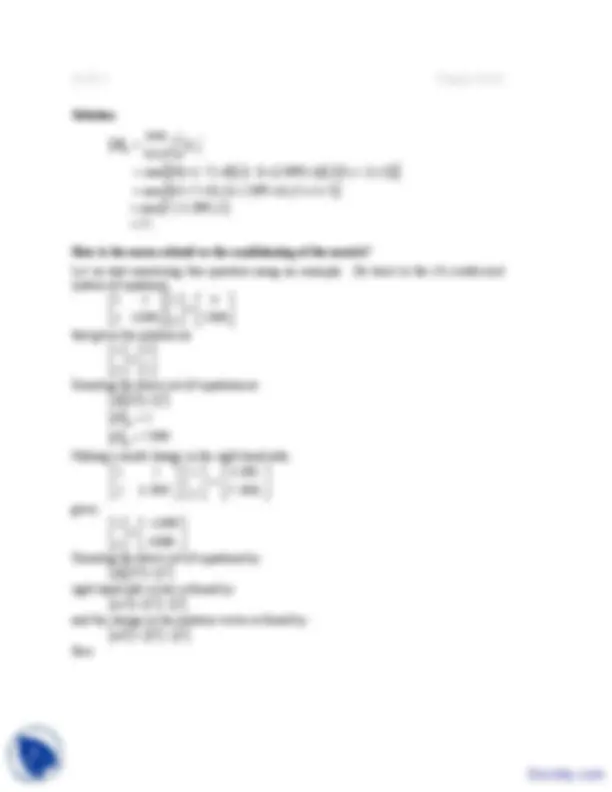
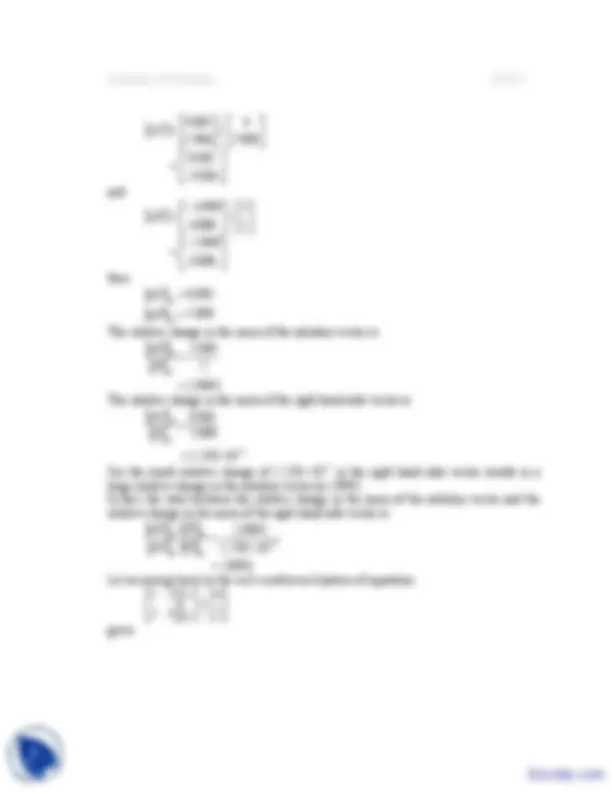
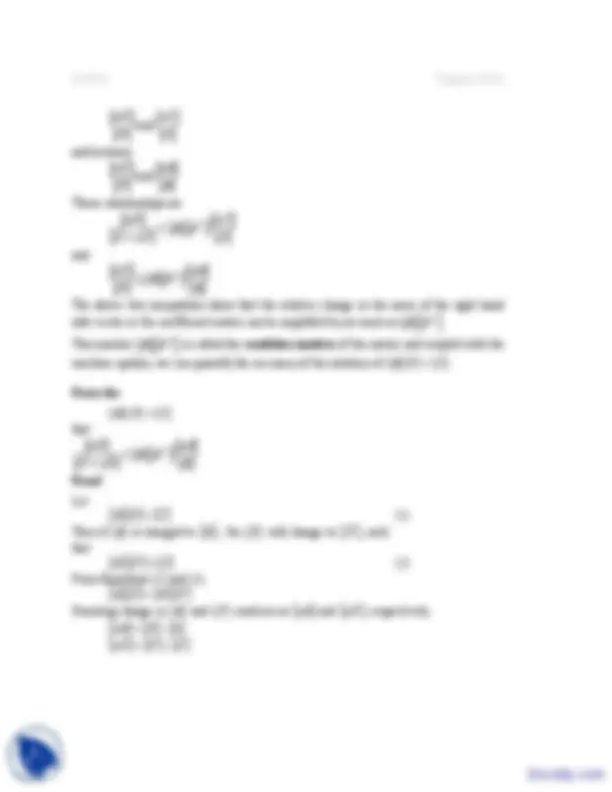
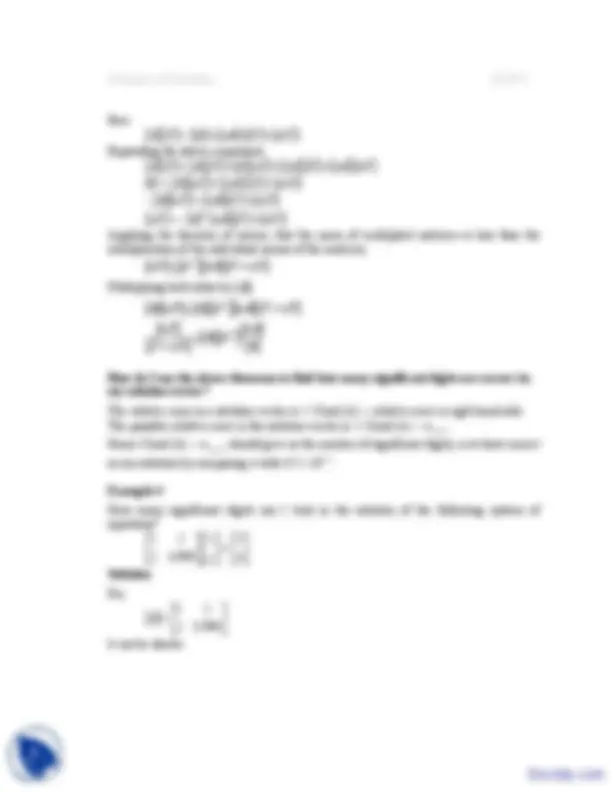
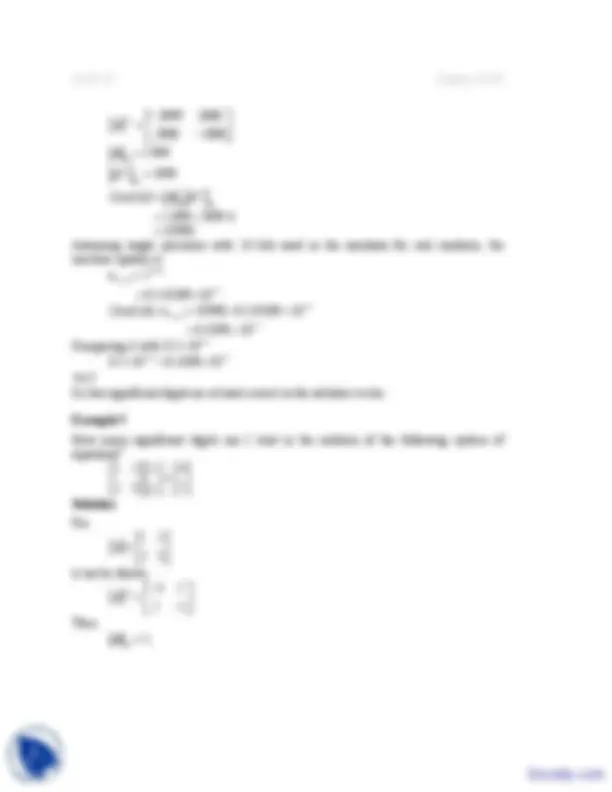


Study with the several resources on Docsity

Earn points by helping other students or get them with a premium plan


Prepare for your exams
Study with the several resources on Docsity

Earn points to download
Earn points by helping other students or get them with a premium plan
Community
Ask the community for help and clear up your study doubts
Discover the best universities in your country according to Docsity users
Free resources
Download our free guides on studying techniques, anxiety management strategies, and thesis advice from Docsity tutors
Main Points are:Adequacy of Solutions, System of Equations, Set of Equations, Vector of Equations, Coefficient Matrix, Condition Number, Invertible Square Matrix, Row Sum Norm, Relative Change, Well-Conditioned System
Typology: Exams
1 / 11

This page cannot be seen from the preview
Don't miss anything!







After reading this chapter, you should be able to:
equations,
matrix, that is, how much trust can you having in the solution of the matrix.
What do you mean by ill-conditioned and well-conditioned system of equations?
A system of equations is considered to be well-conditioned if a small change in the
coefficient matrix or a small change in the right hand side results in a small change in the
solution vector.
A system of equations is considered to be ill-conditioned if a small change in the
coefficient matrix or a small change in the right hand side results in a large change in the
solution vector.
Example 1
Is this system of equations well-conditioned?
y
x
Solution
The solution to the above set of equations is
y
x
Make a small change in the right hand side vector of the equations
04.09.2 Chapter 04.
y
x
gives
y
x
Make a small change in the coefficient matrix of the equations
y
x
gives
y
x
This last systems of equation “looks” ill-conditioned because a small change in the
coefficient matrix or the right hand side resulted in a large change in the solution vector.
Example 2
Is this system of equations well-conditioned?
y
x
Solution
The solution to the above equations is
y
x
Make a small change in the right hand side vector of the equations.
y
x
gives
y
x
Make a small change in the coefficient matrix of the equations.
y
x
gives
04.09.4 Chapter 04.
Solution
3
max
j
aij i
How is the norm related to the conditioning of the matrix?
Let us start answering this question using an example. Go back to the ill-conditioned
system of equations,
y
x
that gives the solution as
y
x
Denoting the above set of equations as
Making a small change in the right hand side,
gives
y
x
Denoting the above set of equations by
right hand side vector is found by
and the change in the solution vector is found by
then
Adequacy of Solution 04.09.
and
then
0. 001
The relative change in the norm of the solution vector is
X
The relative change in the norm of the right hand side vector is
4
See the small relative change of
4
in the right hand side vector results in a
large relative change in the solution vector as 2.9995.
In fact, the ratio between the relative change in the norm of the solution vector and the
relative change in the norm of the right hand side vector is
4
Let us now go back to the well-conditioned system of equations.
y
x
gives
Adequacy of Solution 04.09.
X
4 5 10
The relative change in the norm of the right hand side vector is
C
4
See the small relative change the right hand side vector of
4
results in the
small relative change in the solution vector of
4 5 10
.
In fact, the ratio between the relative change in the norm of the solution vector and the
relative change in the norm of the right hand side vector is
4 1429 10
4 5 10
/
/
. C C
X X
What are some of the properties of norms?
Is there a general relationship that exists between X / X and C / C or
between X / X and A / A? If so, it could help us identify well-conditioned and
ill conditioned system of equations.
If there is such a relationship, will it help us quantify the conditioning of the matrix?
That is, will it tell us how many significant digits we could trust in the solution of a
system of simultaneous linear equations?
There is a relationship that exists between
04.09.8 Chapter 04.
and
and between
and
These relationships are
and
The above two inequalities show that the relative change in the norm of the right hand
side vector or the coefficient matrix can be amplified by as much as
1 A A.
This number
1 A A is called the condition number of the matrix and coupled with the
machine epsilon, we can quantify the accuracy of the solution of [ A ] [ X ] [ C ].
Prove for
that
Proof
Let
A X C (1)
Then if [ A ] is changed to A ' , the [ X ]will change to X ', such
that
A ' X ' C (2)
From Equations (1) and (2),
A X A ' X '
Denoting change in [ A ] and [ X ]matrices as A and X , respectively
A A ' A
X X ' X
04.09.10 Chapter 04.
2000 1000
1
A
1 Cond A A A
Assuming single precision with 24 bits used in the mantissa for real numbers, the
machine epsilon is
6
124
mach
6 ( ) 35990 0. 119209 10
Cond A mach
2
Comparing it with
m
m
m 2
So two significant digits are at least correct in the solution vector.
Example 5
How many significant digits can I trust in the solution of the following system of
equations?
y
x
Solution
For
it can be shown
(^)
2 1
Then
5
Adequacy of Solution 04.09.
1
A.
1 Cond (A) A A
Assuming single precision with 24 bits used in the mantissa for real numbers, the
machine epsilon
124 2
mach
6
6 ( ) 25 0. 119209 10
Cond A mach
5
Comparing it with
m
m
m 5
So five significant digits are at least correct in the solution vector.
Key Terms:
Ill-Conditioned matrix
Well-Conditioned matrix
Norm
Condition Number
Machine Epsilon
Significant Digits